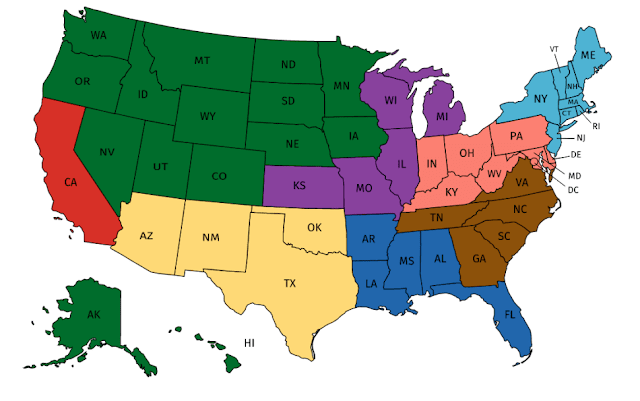According to which poll you look at, anywhere from 70% to 75% of the American public wanted the Senate trial of Donald Trump to have witnesses testify and have real, actual evidence considered, rather than just be a referendum on the Senators' general opinion on the relative merits of impeachment.
70 to 75 percent of the country no longer agrees on almost anything. That preference is almost overwhelming by today's standards, and yet last Friday the Senate voted 51-49 against having witnesses testify. In essence, they voted not to have a real trial at all, at least not one that considers actual evidence, and instead opted to proceed with dismissal of the case exclusively along party lines.
MSNBC's Lawrence O'Donnell pointed out that the 49 Senators who voted for hearing testimony actually represent 19 million more people than the 51 Senators who voted against testimony. In actual fact, the outcome of the Senate vote did not represent the will of the majority.
California alone has a population of nearly 40 million people, but like every state has but two Senators. By contrast, the northwestern quadrant of the country, shaded green above, consists of 15 states (Alaska, Colorado, Hawaii, Idaho, Iowa, Minnesota, Montana, Nebraska, Nevada, North Dakota, Oregon, South Dakota, Utah, Washington, and Wyoming) which contain a total of about 40 million people. Those 15 states collectively have 30 Senators, so the 40 million people in those states are represented by 15 times more votes in the Senate than the 40 million people in California.
Each of the different colored areas in the map above contain a population roughly that of California. Each area contains about 40 million people, and each area other than California contains anywhere from four to 14 states and eight to 28 Senate votes.
The point here is obvious - the vote of the Senate does not necessarily represent the will of the population, but is heavily weighted toward sparsely-populated, rural states. Your vote counts for more if you live in the country than if you live in a city.
Wyoming, the least populated state, has about 560,000 people. That's one Senate vote for every 280,000 Wyoming residents, and one Senate vote for every 20 million Californians. Wyomingites are 100 times more represented in the Senate than Californians.
Washington DC has a population of 700,000 people, far more people than in Wyoming, and no Senate votes. 3.2 Million Americans, more than the entire population of Iowa, live in Puerto Rico and have no Senate votes either.
And why are there two Dakotas? Together, the states have a population less than that of rural West Virginia, but twice as many Senate votes.
The 60 Senators from the 30 least populous states represent only 25% of the nation's population. The remaining 75% of Americans are represented by only 40 Senators. I'm not saying that every small-state Senator voted against testimony and every large-state Senator voted for it, but 70-75% of Americans wanted a proper trial.
This kind of representation disparity is clearly something the Founding Fathers in the 13 original colonies couldn't have foreseen. It's undemocratic, and the results of last Friday's Senate vote are a symptom of this particular malady.
In theory, the House of Representatives is supposed to make up for the population disparities that occur in the Senate, but even there the smaller states are over-represented. Ditto the electoral college.
Remember this on Election Day, November 3, 2020. The Electoral College may be weighted against you, but if we vote in enough numbers, we can still make a difference.
On another note, another car burst into flames this morning on Atlanta's Interstate 85, very close to the site of Saturday's fiery wreck and my breakdown last year. This would have been my morning commute had I still been working. This could have been me.



No comments:
Post a Comment